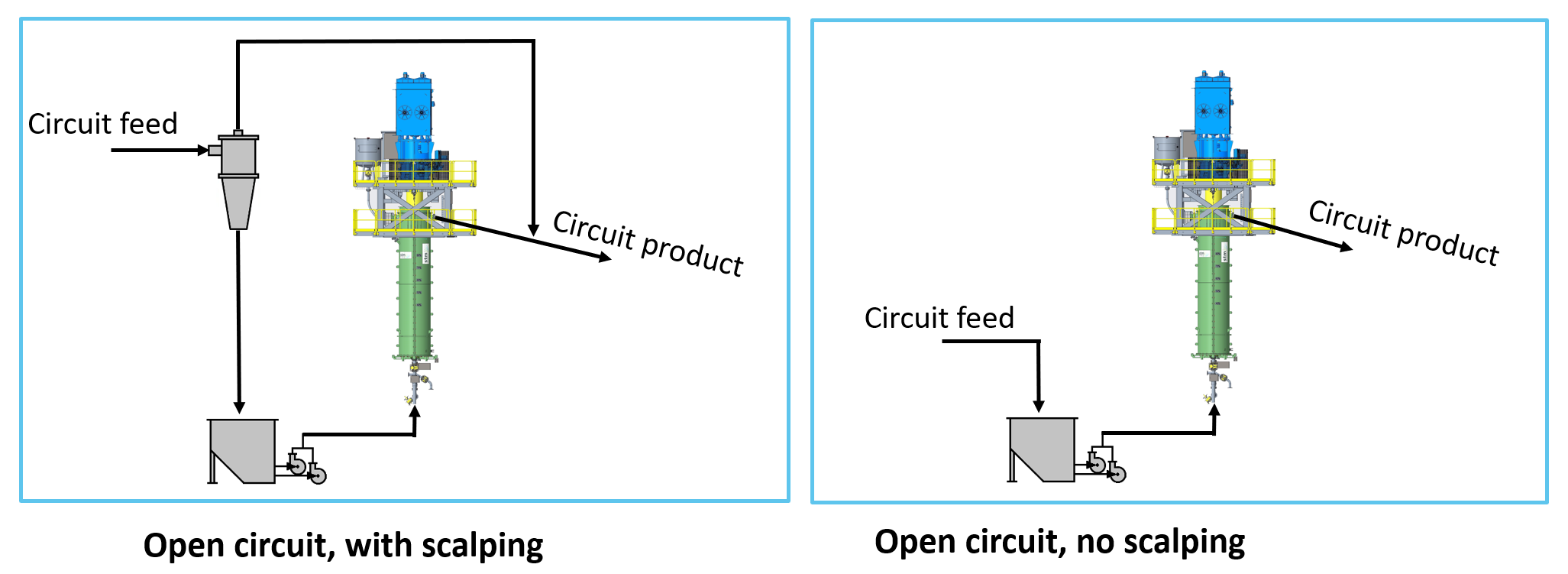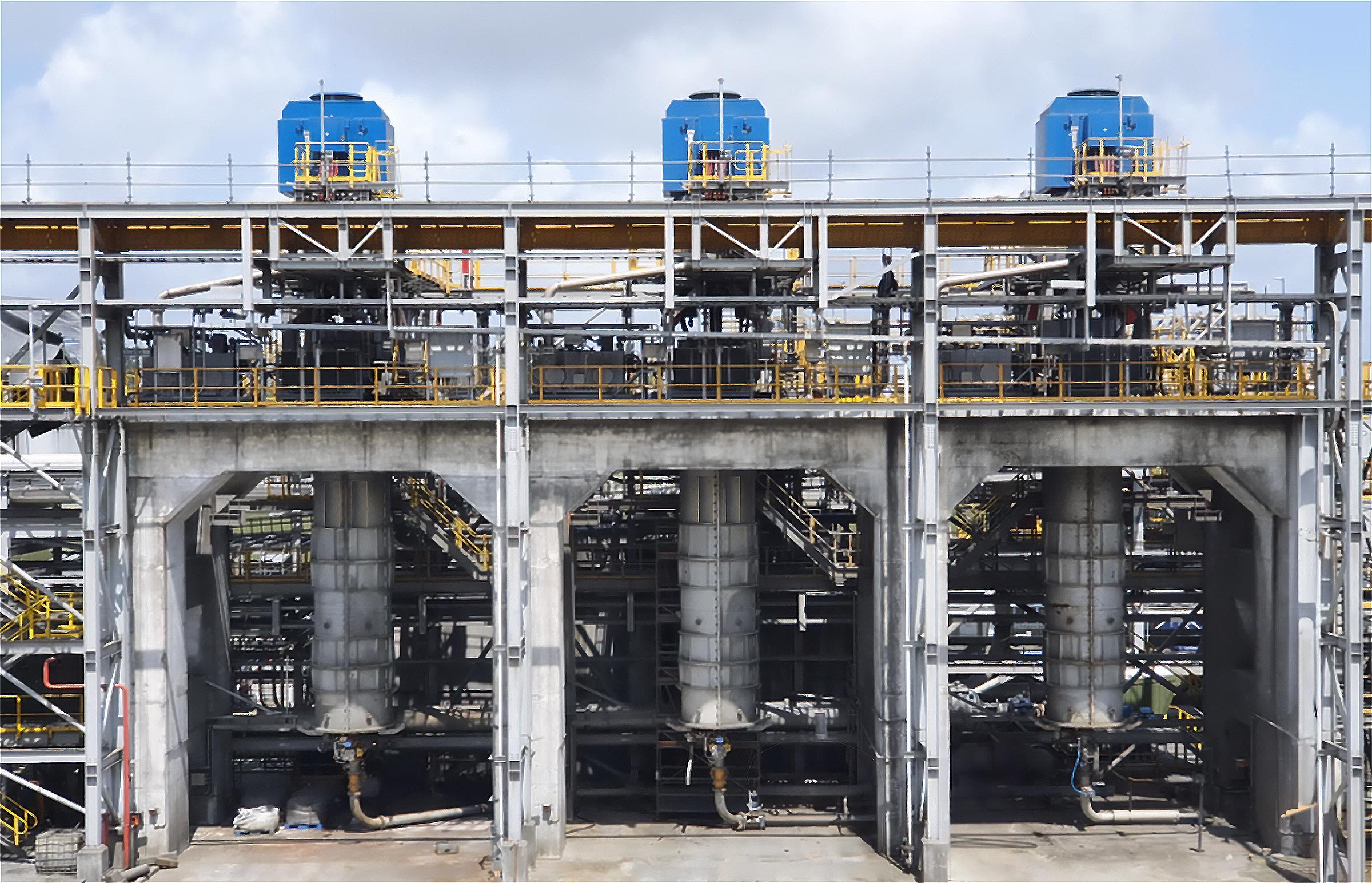Power savings and intelligent use of gravity
- High grinding intensity due to gravity, reduces required energy input
- Proprietary rotor design increases grinding efficiency by up to 30% and wear life
- Internal classification and multiple grinding intensity zones, reduces over grinding and saves energy and wear
Grinding in the STM mills is achieved by attrition caused by the interaction between feed particles and grinding media. The feed slurry is pumped from the bottom through the stirred bed of media, which typically occupies up to 60% of the mill volume. Gravity prevents overflow of media from the mill and ensures it is evenly distributed across the grinding chambers. Rotating grinding rotors apply energy only in radial direction; therefore, no power is wasted for lifting up the mill charge.
Inert grinding media
- Ceramic grinding media has a 91% and 81% lower consumption rate than forged and high chrome steel media
- Ceramic media results in significant savings, 50% and 39% cost reduction compared to forged and high chrome steel media
The ceramic grinding media used in our mills have a lower consumption rate than conventional steel media. In addition, in certain applications significant higher recoveries in the downstream process are achieved, due to the inert nature of the ceramic grinding media (no steel contamination).
Open circuit approach
- Reduced equipment costs and complexity, due to the precise, high performance grinding mechanism that produces a steep particle distribution without additional classification equipment.
- No recirculating load, reduced pumping costs for equipment and operation
- Open circuit design ensures simple operation and balancing of process circuit

This simple open circuit flow sheet is enabled by the combination of:
- the internal classification provided by the selective grinding mechanism, reducing overgrinding
- the elimination of coarse particles to short circuit the grinding chambers
- advanced control modes, and variable speed drive on mill motor to provide precise control to varying feed conditions
A scalping cyclone can be installed in front of the mill to allow fines to bypass the mill, passing directly to the discharge, forming part of the grinding product. In this circuit, only coarser particles are fed to the mill. In other cases the full circuit feed is fed to the mill.
There is typically no external classification on the mill product side.
Compared to a conventional closed circuit approach, this results into a smaller cyclone (if applicable), reduced footprint, and more convenient straight forward control.
Largest stirred mills, broadest mill range
- The right size mill for every application, save costs on equipment and operation by using the right tool for the job
- From 75kW to 12,500kW installed power, 200 Litre, to 75,000 Litre volume
STM has the worlds’ largest stirred mills in its portfolio. Several units with 5 MW installed power are in operation for multiple years. Several larger units up to 6.5 MW installed power have already been manufactured and delivered. Currently the largest mill option in our portfolio has 12.5 MW installed power.
Efficient use of Space
- Bottom feed means feed pumps and tanks on ground level
- Vertical machine means required floor space is minimised
The vertical arrangement, combined with the open circuit approach, typically results in a smaller footprint compared to other grinding solutions.
Proven 1:1 scale up from lab to large scale
- Proven lab scaleup based on sizing hundreds of mills
- Ensures the right mill for the right application
STM uses advanced testing methodology ensuring 1:1 upscaling accuracy from lab testing to production mill. The same grinding mechanism, media size and type and slurry density are used in the test and production size mills, therefor no additional special scaling factor is required.
Rapid installation
- Reduce installation costs with pre assembled modules
- Reduce risk of safety incidents by reducing the amount of high risk work on site in a construction environment
- Reduce risk and cost of rework and troubleshooting
Our mills are delivered as large pre-assembled modules where practical due to transport limits, including wiring, sensors and ancillary equipment. This truly minimizes the installation times and cost.
Simple Maintenance
- Low maintenance time and reduced maintenance cycles
- Simple replacement of parts
- Potential for reuse of partially worn parts in other areas of the mill maximises cost efficiencies
- Flexible rotor and material configuration to fine tune performance
- Simple custom work tools to maintain efficiency and safety
Environmental, Social and Governance (ESG) Criteria
STM vertical stirred mills supports customers to achieve their ESG targets through a range of metrics:
Environmental
- The high energy efficiency reduces the carbon footprint and meet support meeting carbon reduction targets.
- Low media consumption and lower density, inert material reduces CO2 footprint compared to steel ball media across the supply chain (related technical paper: The Impact of Media Embodied Carbon Emissions on Regrind Technology Selection)
- Minimising wastage, and ability to recycle a large portion of out of service wear parts
Social
- An Equal Opportunity employer
- Health and safety focus for employees, customers and community
- Responsible supply chain
Governance
- Ethical and sustainable business practices
- Compliant and high integrity accounting
- Strong corporate governance and risk management
